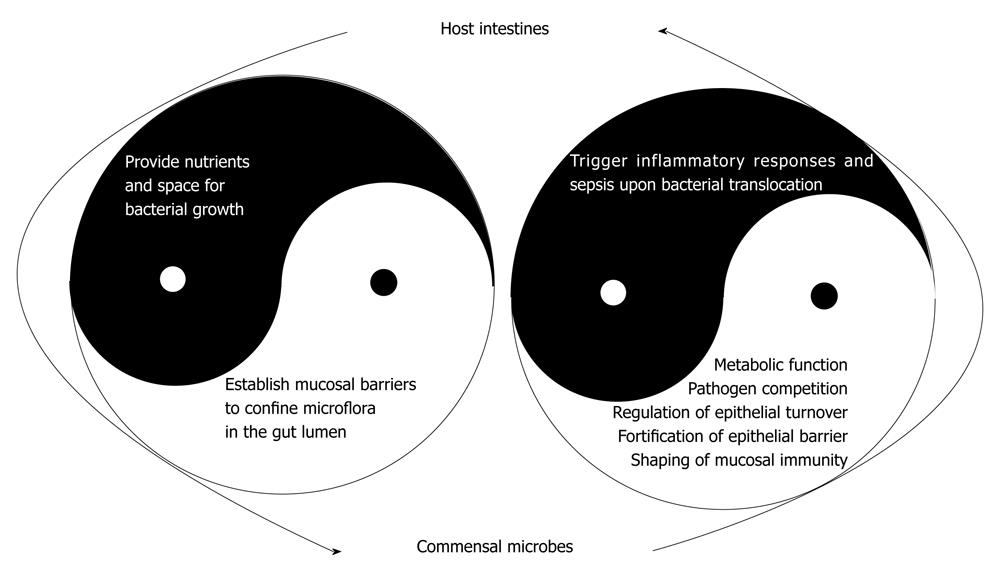Copyright
©2012 Baishideng Publishing Group Co.
World J Gastrointest Pathophysiol. Feb 15, 2012; 3(1): 27-43
Published online Feb 15, 2012. doi: 10.4291/wjgp.v3.i1.27
Published online Feb 15, 2012. doi: 10.4291/wjgp.v3.i1.27
Figure 2 Dynamic interactions between host intestine and commensal microbes to achieve balance for maintenance of gut homeostasis.
The survival and growth of enteric microbes relies on energy supply from food nutrients, and are dependent on the space and anchor provided by the host intestines. Conversely, luminal microbes are capable of fermenting non-digestible dietary substances, generating short chain fatty acids and essential vitamins, and providing caloric sources for the host. These symbiotic bacteria also play important roles in pathogen competition, regulation of the turnover rate of enterocytes and fortification of epithelial barrier functions, as well as shaping of the mucosal immunity. From the host's point of view, tight physical, chemical and immune barriers of intestines are pivotal in the keeping of the number and location of the microfloral population in check in order to maintain the health-promoting effects, and to prevent bacterial dissemination and the triggering of local and systemic inflammatory responses. The balance of Yin-Yang between the host intestine and commensal microbes is central to maintaining homeostasis.
- Citation: Yu LCH, Wang JT, Wei SC, Ni YH. Host-microbial interactions and regulation of intestinal epithelial barrier function: From physiology to pathology. World J Gastrointest Pathophysiol 2012; 3(1): 27-43
- URL: https://www.wjgnet.com/2150-5330/full/v3/i1/27.htm
- DOI: https://dx.doi.org/10.4291/wjgp.v3.i1.27









